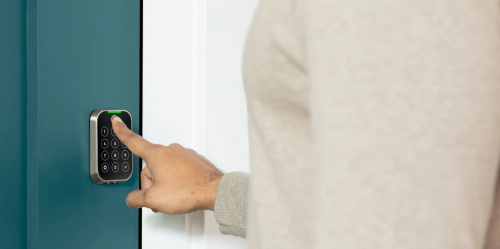 In today's world, accessibility in buildings and homes has become an important aspect of design. People with physical disabilities or mobility impairments often struggle to navigate through standard homes, which poses a significant barrier to their daily lives. Therefore, it is crucial to make modifications in our living spaces that promote independence and inclusivity for all individuals.
In today's world, accessibility in buildings and homes has become an important aspect of design. People with physical disabilities or mobility impairments often struggle to navigate through standard homes, which poses a significant barrier to their daily lives. Therefore, it is crucial to make modifications in our living spaces that promote independence and inclusivity for all individuals.
In this guide, we will explore various modifications that can be made to create a barrier-free living space.
Understanding Accessibility
Before diving into specific modifications, it is essential to understand what accessibility means. Accessibility refers to the design of products, devices, services, or environments that cater to people with physical disabilities. It aims to provide equal access and opportunities for individuals with different abilities. In the context of home modifications, accessibility involves creating an environment that enables individuals with mobility impairments to move around freely and perform daily tasks with ease.
Home Modifications for a Barrier-Free Living
When it comes to making homes accessible, several modifications can be made to accommodate individuals with physical impairments. These modifications aim to eliminate barriers and obstacles that may hinder an individual's movement within their own home. Some of the most common modifications include:
Ramps
Ramps are an essential modification for individuals who use wheelchairs or have difficulty climbing stairs. They provide a gradual slope that allows for easy movement between different levels of the home. Ramps can be made of various materials such as wood, aluminum, or concrete, depending on the individual's needs and budget.
Wide doorways and hallways
Standard doorways and hallways can pose significant barriers for individuals with mobility impairments. Widening the doorways and hallways to a minimum of 36 inches allows for easy navigation of wheelchairs and walkers. This modification also makes it easier for individuals with crutches or canes to move around freely.
Lowered countertops and cabinets
In the kitchen, lowered countertops and cabinets make it easier for individuals using wheelchairs to reach and use them. These modifications also benefit individuals of shorter stature or those with limited arm strength.
Lever door handles
Traditional doorknobs can be challenging to operate for individuals with limited hand mobility. Replacing them with lever door handles allows for easy access and operation, promoting independence and inclusivity within the home.
Keypad door locks
Another modification that promotes accessibility and convenience is keypad door locks. These allow individuals to enter their homes without having to fumble with keys, making it easier for those with limited hand mobility or dexterity.
Benefits of an Accessible Home
Aside from providing individuals with physical disabilities a sense of independence and inclusivity, making modifications for a barrier-free living space also offers several benefits. These include:
1. Enhanced safety
Accessible modifications promote a safer living environment by eliminating potential hazards and obstacles. This is especially important for individuals with mobility impairments who may be at a higher risk of falls or accidents.
2. Improved functionality
By making modifications to cater to specific needs, homes become more functional for all individuals living in it. For example, lowered countertops and cabinets not only benefit individuals in wheelchairs but also those of shorter stature.
3. Increased property value
Creating an accessible home adds value to the property, making it more appealing to potential buyers or renters. As accessibility becomes a more significant factor in home design, having these modifications in place can make a difference in the marketability of the property.
Conclusion
In conclusion, creating a barrier-free living space is crucial for promoting independence, and inclusivity and improving the overall functionality of a home. With various modifications available, it is possible to make homes more accessible for individuals with physical disabilities. By investing in these modifications, we not only cater to the needs of others but also create an inclusive society where everyone can thrive. So let's work towards making our homes sweet, accessible homes.











